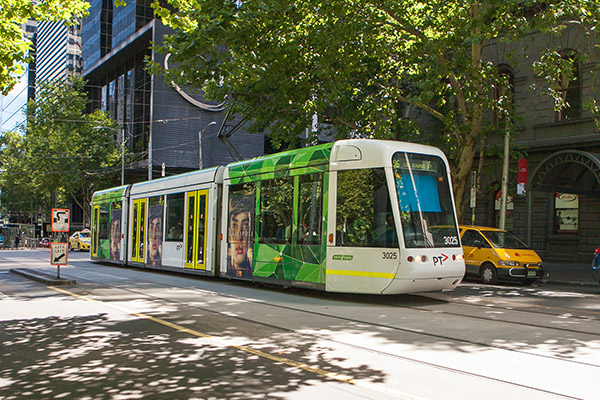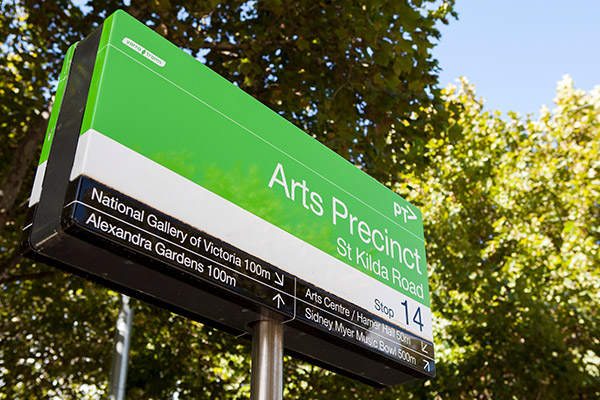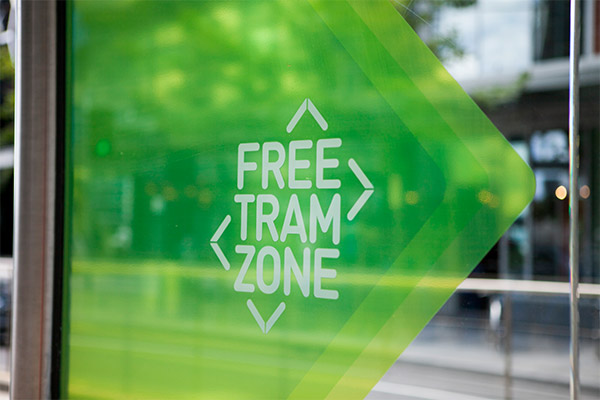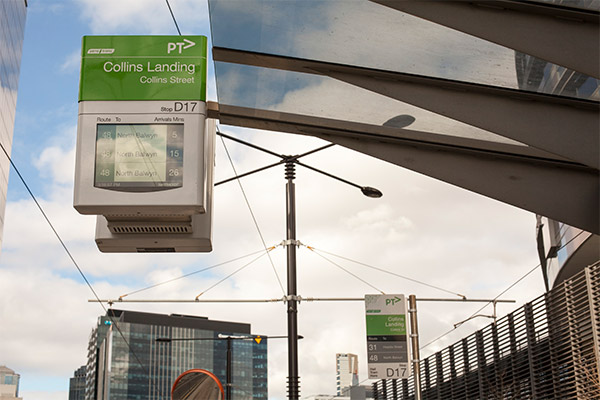Yarra Trams
Trams are the lifeblood of Melbourne, and the tram network provides an essential service to the residents and visitors of the world’s most liveable city.
Trams are the primary mode of public transport for inner suburban residents, and they connect Melburnians with employment, social, cultural and educational activities. The trams also provide vital connections with train and bus services, creating one of the largest transport networks in the world.
Many cities in Australia (including Sydney) and around the world removed their tram networks in the 1950s and 1960s as the rapid rise of affordable, private cars seemed to signal the death knell of trams. Melbourne’s planners resisted this push and instead invested in the network to expand it, including in recent times as the CBD has moved westwards to the Docklands.
More than 200 cities are now recreating, building or planning tram networks. If the Melbourne network were to be rebuilt today, it would cost more than $20 billion and take several decades to complete. In this context, the Melbourne tram network should be seen as an irreplaceable public asset to be embraced and developed further.
Keolis Downer, as current custodian of the network, is an organisation built on the values of we care, we commit, we imagine, zero harm and thinking like a passenger. These values are supplemented by the principles of trust and fairness that guide all of our decisions.
More About Keolis Downer
Accreditation
Accredited Rail Transport Operator under Section 39 of The Rail Safety (Local Operations) Act 2006 Victoria
Certification
ISO9001 – Quality Management Systems
ISO45001 – Occupational Health and Safety Management Systems
ISO14001 – Environmental Management Systems
ISO55001 – Asset Management
Shaping the City Fabric
Melbourne’s tram network is the biggest and oldest in the world, and Melbourne trams are arguably the most iconic feature of a city known for its culture, food and wine, events and multiculturalism.
Melbourne has more than 1,750 tram stops and carries more than 200 million passengers every year across its 450-strong fleet of trams. It can be useful to focus on just one of the city’s tram stops to see the importance of the network. The story of the Federation Square stop shows the vital role played by the tram network in keeping Melbourne moving and connected.
The Federation Square stop is the busiest in Melbourne, with a tram passing almost every minute and catering for 22,000 passengers each day. Passengers using the stop are connecting to the rail network at Flinders Square, numerous activities along the Yarra River which runs below, and the city’s educational institutions.
One of the challenges in managing the world’s largest tram network is traffic priority. Seventy-five percent of the network is currently shared with other road traffic. Increasing road traffic and the resulting congestion inevitably lead to a slowing in the average speed of Melbourne’s trams. This problem can be partially addressed with engineering solutions to deliver both separation and traffic priority. For the biggest impact, a mature debate in the community is required. This should embrace;
- Change in behaviour by motorists
- Changes to traffic rules
- Better understanding among the wider population about the broader social and economic impacts of a ‘slowing’ tram network
- Efficient road space allocation.
While this issue cannot be solved overnight, other changes that have been introduced or are being planned will improve the network. The future of tram travel is the premium line strategy being rolled out on Route 96 that will deliver a coordinated program of initiatives to improve all aspects of the tram service. The success of this strategy will see;
- Improved punctuality
- Increased frequency
- 100% vehicle and stop accessibility for passengers with reduced mobility
- Shorter journey times
- Better multimodal connections
- Enhanced passenger information
- Enhanced safety elements
These improvements are due to the introduction of the new E-Class trams, which are modern, safe and accessible. Also important, are changes to traffic priority, stop design and investment in information for passengers both at stops and via digital and web-enabled devices. These ideas will help to future-proof the network, with provision made today for the longer trams of tomorrow. The success of Route 96 will play a key role in creating the future tram network.



Visit the Yarra Trams website to learn more about our network
Thinking Like a Passenger
Thinking like a passenger is central to Keolis Downer’s approach. It guides Yarra Trams to make the changes necessary to improving passenger outcomes, whether they pertain to information, personal security, service design, reliability and the other factors that determine overall customer satisfaction.
Some of the initiatives underway include;
- Improving business processes and delivering key passenger information projects to provide information in a timely manner to customers so they can make the most informed decisions about their travel.
- Monitoring and reviewing the strategy to improve both personal and asset security.
- Implementing new customer service standards consistent with our accreditation with the Customer Service Institute of Australia.
- Tackling the other drivers of satisfaction such as design, space, and comfort and ticketing.
Customer satisfaction is already at record level (75%), but we aim to achieve a rate of over 80% as these projects and others deliver improvements that are noticed and appreciated by customers.

Fast Facts & Figures
Ensuring Zero Harm
The safety of employees, customers and anyone else who comes into contact with the tram network is the overriding responsibility of the company. The key areas of focus include reducing the number and severity of;
- Derailments
- Pedestrian knockdowns
- Passenger falls
- Tram-to-tram and tram-to-vehicle collisions
We have seen encouraging results in relation to employee safety after introducing better systems and processes to avoid injuries and ensure a timely return to work. The total recordable injury frequency rate (TRIFR) for Yarra Trams has improved by 40% over the past few years.
Always Learning
Collecting, analysing and sharing information is paramount at Yarra Trams.
In recent years, Yarra Trams has invested in tools and processes to analyse vast amounts of information about the network. The data is used to ensure accountability for plans and outcomes; to make better decisions; and to improve customer outcomes, safety and network efficiency.
The visualisation room at the Tram Hub (Yarra Trams headquarters) provides an evidence-driven methodology for delivering high-performance targets captured in the business plan;
- Safety and environment
- Operational performance
- People and leadership
- Customer satisfaction
- Value for money
- Partnering
Accountabilities for actions and targets are each registered against one of the senior executives. If data shows that an indicator is heading in the wrong direction, the relevant executive sees to the creation of a cure plan. Because most tasks require the support of multiple teams, this also puts a high level of cross-business accountability on display.
The CEO uses the data to manage his direct reports, and it cascades throughout the business. The Board applies a similar philosophy to the entire Keolis Downer team. This approach is producing results, with improvements seen in customer satisfaction, business efficiency, revenue protection and engagement across the business.
Transparency is also a key factor in making this new approach effective. Everyone in the business has access to the visualisation room and the events calendar. This visualisation approach, pioneered in Melbourne, is also being replicated in Keolis subsidiaries overseas.
Value for Money
Ensuring that customers of the network pay their fare is a key focus. The introduction of myki coincided with a spike in fare evasion, but now that the system is functioning well, travellers have adapted their behaviour, and revenue protection activities have become more effective.
Respect for People
Two overriding principles guide the behaviour and decisions of Yarra Tram’s leaders: trust and fairness. These principles underpin decisions relating to safety, customer outcomes and stakeholder engagement.
Keolis Downer is committed to developing a workforce that reflects the community within which we operate. This means embracing the thriving multiculturalism of Australia’s most cosmopolitan city and promoting gender diversity and support for people with a disability.
Yarra Trams’ Driven Women program has helped to support greater levels of participation by women in our workforce.
